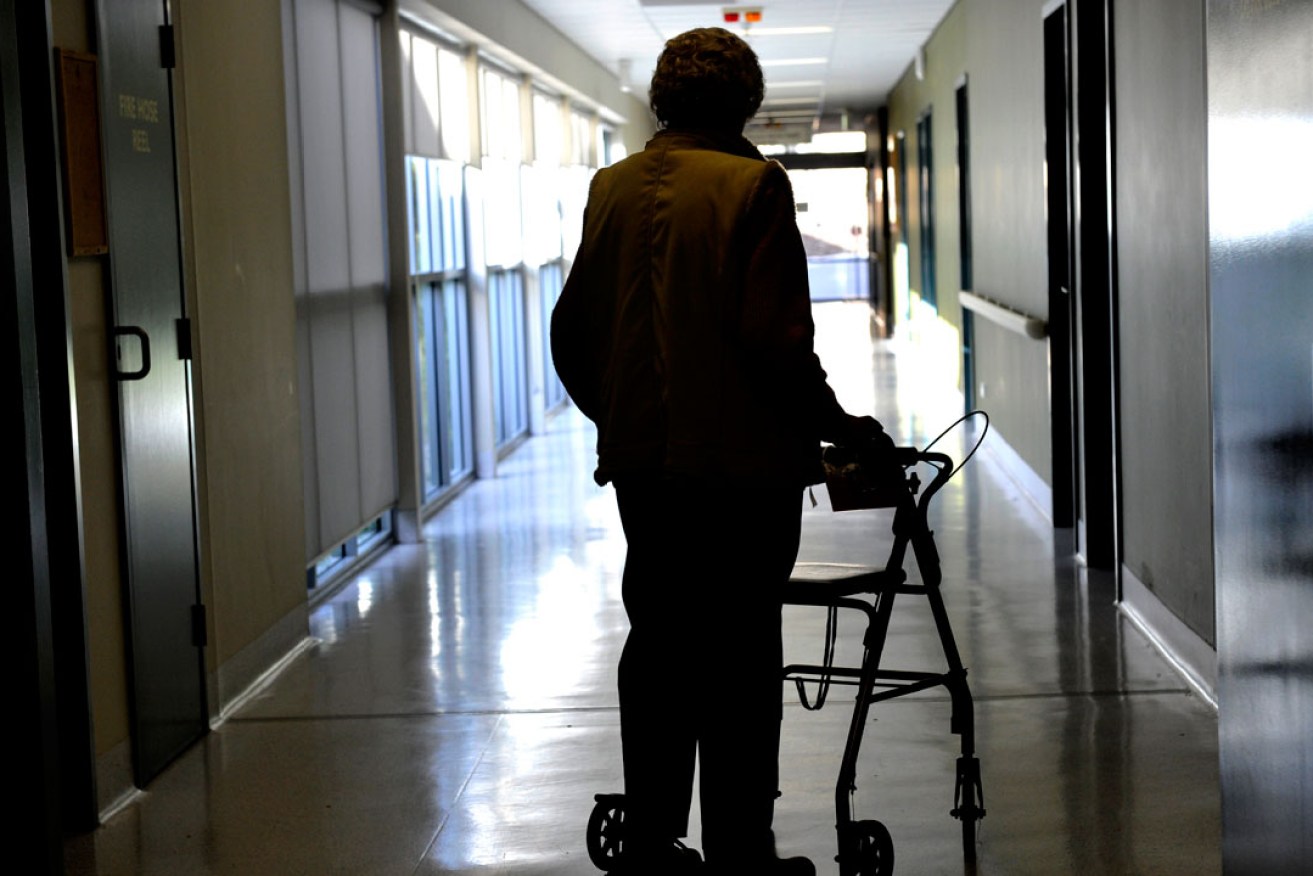Aged-care crisis? Not yet
It’s not all doom and gloom in the aged-care sector, but facilities do face challenges in attracting, training and retaining workers – especially in the face of new government regulations and programs, write Andrew Beer and Xin Deng.

Photo: AAP
We have become used to announcements that a shortage of aged-care workers is looming.
And with that, there are forecasts of facility closures, escalating costs and lower quality care – all raised as significant risks for our older population.
The triggers for these announcements are well known. The rapid growth in the population of older people, relatively low salaries in the aged-care sector, and an anticipated avalanche of retirements out of the aged care-sector as the workforce itself ages are all genuine concerns.
When compared with the whole of Australia, a relatively high percentage of South Australia’s labour force is employed in aged care. The latest Australian Bureau of Statistics data suggests the sector accounts for 15 per cent of workers in SA, while the national average is 13 per cent.
It is also a casualised workforce, with 55 per cent employed part time or on a casual basis, which generates extra challenges for human resource management.
Earlier in the year, the University of South Australia Business School undertook a survey of aged-care sector agencies which canvased the opinions of providers on their recent experiences in the labour market, their staff development activities, and their efforts in training and retaining personnel.
Importantly, the overwhelming majority of aged-care providers did not think they were competitive in the market. And within this group, small and medium providers – as well as those operating in multiple areas and regional SA – saw themselves as vulnerable compared with service providers in other industries.
They had clear ideas about why their capacity to attract and retain labour was limited.
First and foremost, they noted that pay rates were lower in the aged-care sector than in many other industries, reducing the attractiveness of working in the sector.
Secondly, they admitted that many potential recruits were put off by the absence of well-developed career opportunities. There was variation across providers, with the smaller and regional agencies feeling more vulnerable because of lower pay and limited options for career progression.
Clearly, aged-care providers see themselves as “at risk” when it comes to attracting employees, but to date their worst fears have not been realised.
When surveyed, most providers reported that they have not had substantial problems in recruiting or retaining staff. When asked if they had trouble in recruiting or retaining identified categories of employees in the past 12 months, their answer was a resounding “no”. Only volunteers were hard to come by, and clearly their attachment to these enterprises will always be marginal and insecure.
Despite the doom and gloom, the research shows there are grounds for optimism as we consider the future of this state’s aged-care workforce.
The data on turnover rates and the skills of the newly recruited staff showed that only a small proportion of aged-care agencies reported a high staff turnover rate, and then only in a limited number of employment categories.
The majority (more than 60 per cent) of respondents stated their new recruits were adequately skilled and not subject to high attrition rates.
The role of carer was the only core job category of concern in terms of skill adequacy, but this may reflect the fact that entry requirements for employment are often minimal.
While all of us can take heart from the fact that the aged-care sector can find sufficient numbers of adequately trained and capable staff, other challenges remain a threat.
Many agencies reported that changes in the regulatory environment and government programs have generated substantial challenges, including ensuring that the workforce is kept up to date, and that agency staff meet the needs of the changed operating environment.
Regional and smaller aged-care agencies experienced proportionately greater difficulty in adjusting their workforce to change because of a range of factors, including shifts in demand, access to a smaller pool of labour, and smaller management teams available to guide the organisation through a process of transformation.
So, what can we say about employment in the aged-care sector in SA in 2016?
We can say that while it remains challenging – it is a long way from being in crisis.
Organisations may well have to find new ways to drive productivity growth, and there may be a need for the sector as a whole to both invest in innovation and have difficult conversations with governments about focussing more on regulating outcomes, not inputs.
Government itself is already creating an environment that is putting some smaller and regional aged-care providers under stress and it would be a tragedy to see non-metropolitan centres stripped of aged-care facilities because of new demands from governments.
You can read more about the results of the sector survey here.
Andrew Beer is Dean of Research and Innovation and Xin Deng is a lecturer in Economics at the University of South Australia Business School.




